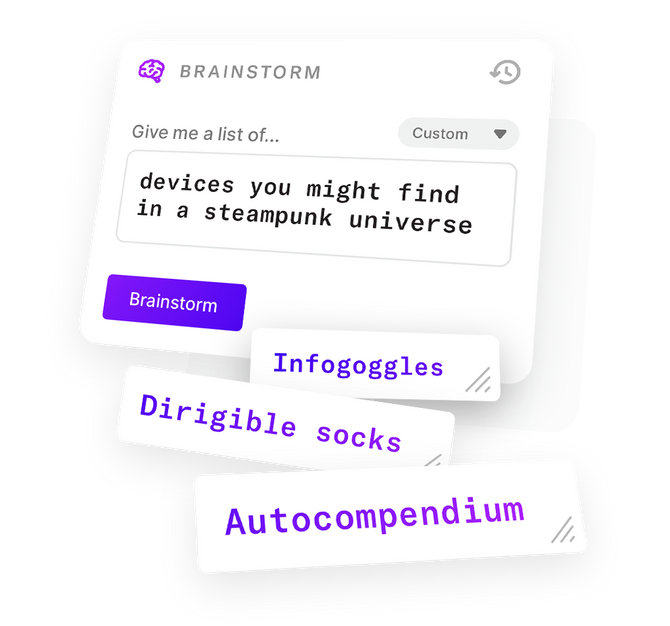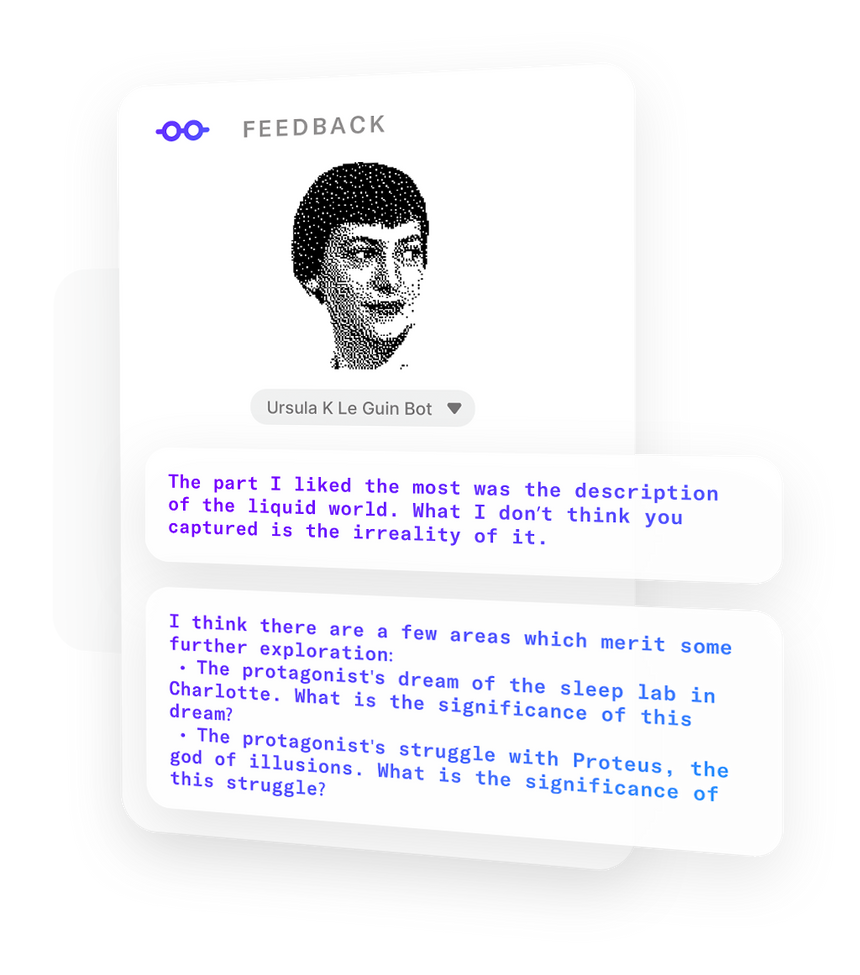
Artificial intelligence has brought significant changes to the technology industry. It has enabled the development of smarter tools that can perform complex tasks such as predicting, recommending, and generating content. One of the recent advancements in artificial intelligence is the development of GPT-3 technology.
GPT-3 (Generative Pre-trained Transformer 3) is a language model developed by Open AI. It is an advanced version of GPT-2, and it is trained on a massive amount of data from the internet. GPT-3 has the capacity to generate human-like text in natural language, making it a valuable tool for various applications.
Sudowrite is a writing assistant tool that uses artificial intelligence to help writers create compelling content. Sudowrite utilizes GPT-3 technology to offer suggestions, edits, and generate content for its users.
In this blog post, we will explore the use of GPT-3 technology in Sudowrite. We will examine the different ways in which GPT-3 is utilized within Sudowrite and its impact on the tool's capabilities and user experience. We will also consider the potential benefits and limitations of this integration and provide relevant examples and case studies to support our arguments.
Use of GPT-3 in Sudowrite
Sudowrite is a writing tool that leverages artificial intelligence to help writers create compelling content. It offers suggestions, feedback, and even generates content on behalf of the writer. One of the unique features of Sudowrite is its integration with GPT-3 technology. This integration allows Sudowrite to provide more advanced and nuanced assistance to its users.
The following are the different ways in which GPT-3 is utilized in Sudowrite:
1. Content Generation
GPT-3's language generation capabilities are leveraged by Sudowrite to generate content for its users. Sudowrite allows writers to specify a topic, and the tool generates content based on that topic. This feature is especially useful for writers who struggle with writer's block or need inspiration for their writing.
For instance, a writer who needs to create content on the topic of "artificial intelligence" can input this topic into Sudowrite's content generation feature. Sudowrite will then generate content based on this topic, which the writer can then edit and refine.
2. Suggesting Content and Improvements in Real-time
GPT-3's language capabilities are used by Sudowrite to suggest content and improvements in real-time as the writer is typing. Sudowrite offers suggestions such as better word choices, sentence restructuring, and even entire paragraphs that the writer can use to improve their writing.
Sudowrite's real-time suggestions help writers to refine their writing as they go along. It also provides writers with a new perspective on their writing and can help them to come up with new ideas.
3. Summarization
Sudowrite's summarization feature utilizes GPT-3 technology to condense lengthy passages of text into shorter, more concise summaries. This feature is useful for writers who need to extract key points from lengthy documents or articles.
The summarization feature is not only restricted to integration with GPT-3, but it is also combined with other AI technologies.
4. Language Translation
Sudowrite can translate text from one language to another using GPT-3 technology. This feature is useful for writers who need to write content in a language they are not fluent in or communicate with people who speak different languages.
The language translation feature leverages GPT-3's language processing capabilities, which can accurately translate text from one language to another.
Impact of GPT-3 Integration on Sudowrite's Capabilities and User Experience
The integration of GPT-3 technology into Sudowrite has significantly improved the tool's capabilities and user experience. The following are the benefits of this integration:
1. Improved Content Quality
Sudowrite's integration with GPT-3 has significantly improved the quality of content produced by the tool. The content generated by Sudowrite is more coherent and natural-sounding, thanks to GPT-3's language generation capabilities.
GPT-3's real-time suggestion feature also helps writers to refine their writing as they go along, leading to higher quality content.
2. Timesaving
Sudowrite's integration with GPT-3 has saved writers time as they no longer need to spend hours researching and generating content. Sudowrite generates content quickly and efficiently, allowing writers to focus on other aspects of their work.
3. Improved Accuracy
Sudowrite's use of GPT-3 has also improved the tool's accuracy. GPT-3's language processing capabilities are highly accurate, and this, coupled with Sudowrite's summarization and language translation features, allows writers to produce error-free content.
Limitations of GPT-3 Integration in Sudowrite
As with any technological integration, GPT-3 integration in Sudowrite has its limitations. The following are some of the challenges that Sudowrite faces in integrating GPT-3 technology:
1. Bias
GPT-3's learning may be influenced by the data used to train it. This means that the technology may generate content that has inherent bias or reflects the view of the data used to train it.
2. Dependence on Internet Connection
Sudowrite depends on a stable internet connection for GPT-3 to function. This dependency may limit the tool's use in areas where internet connectivity is poor or unavailable.
3. Limited Customization
Sudowrite's GPT-3 integration is not customizable. This means that writers cannot fully tailor the tool to their unique writing style or preferences.
Conclusion and Recommendation
The integration of GPT-3 in Sudowrite has significantly improved the tool's capabilities and user experience. The use of GPT-3 technology has allowed Sudowrite to generate content, suggest edits, and summarize documents more effectively.
However, Sudowrite still faces some limitations that need to be addressed. To ensure that the tool remains relevant and effective, the following recommendations are proposed:
1. Addressing Bias
Sudowrite must ensure that GPT-3-generated content is free from bias. This can be achieved by using diverse data sets during the training process and validating the content generated by GPT-3 before presenting it to users.
2. Offline Capabilities
Sudowrite should also consider developing offline capabilities to ensure that the tool remains useful even in areas with poor or no internet connectivity.
3. Customization
Sudowrite should also consider introducing customization features that allow writers to tailor the tool to their unique writing style and preferences. This could improve the user experience and encourage more people to use the tool.
In conclusion, the integration of GPT-3 technology in Sudowrite has significantly improved the tool's capabilities and user experience. Sudowrite's use of GPT-3 to generate content, suggest edits, summarize documents, and translate content has shown that AI can be an effective writing assistant. With proper attention to its limitations and management of its capabilities, Sudowrite could continue to provide vast improvements to the way that writers work.
More about Sudowrite and Chat GPT4
The field of artificial intelligence (AI) has rapidly evolved over the years, and AI writing software has become an essential tool for businesses, marketers, and copywriters. Two of the most advanced AI writing tools on the market are Sudowrite and GPT (Generative Pre-trained Transformer) series, with GPT4 being the latest. This article aims to provide an in-depth analysis of the impact that GPT4 has had on Sudowrite by comparing and contrasting it with GPT3 and Sudowrite. It will also provide an overview of the features offered by each tool, highlighting differences in performance, accuracy, and efficiency, along with real-world examples of how businesses, marketers, and copywriters have leveraged AI writing software to improve productivity, performance, and ROI.
Overview of Sudowrite and GPT series
Sudowrite is an AI writing tool that uses machine learning to generate content quickly and accurately. Sudowrite is designed to handle all types of writing, from blog posts to technical documentation. The user interface of Sudowrite is user-friendly, and the tool integrates with various writing tools such as Google Docs, Microsoft Word, and Grammarly.
On the other hand, the GPT series is a language model developed by OpenAI, a research organization that focuses on AI. GPT models are trained on vast amounts of data to understand natural language meaning accurately. The GPT series is designed to predict the next word or character, given a sequence of input text. GPT3, the predecessor of GPT4, has 175 billion parameters and is considered one of the most advanced language models. GPT3 has proven to be highly reliable and accurate in generating text that mimics human language.
Comparison of Sudowrite, GPT3, and GPT4
Performance
Sudowrite, GPT3, and GPT4 all boast impressive performance in generating text at an incredible rate. However, GPT4 has outperformed its predecessors, GPT3 and Sudowrite. GPT4's performance is attributed to the model's larger size, increased dataset, and better training methodology. GPT4 has 10 times more parameters than GPT3, making it more efficient in generating high-quality text.
Accuracy
Based on studies conducted by OpenAI, GPT4 has been reported to produce more accurate text than GPT3. The accuracy of GPT4 can be attributed to its larger training dataset and improved training methodology. Sudowrite, on the other hand, relies on user-generated content to train, which may not always be accurate.
Efficiency
Sudowrite boasts an efficient user interface that is easy to navigate, and the tool integrates well with other writing tools. The GPT series, on the other hand, requires a bit of technical expertise to use effectively. The GPT series is more efficient in terms of generating text, primarily due to its advanced models and algorithms.
Real-world examples of AI writing software usage
Many businesses, marketers, and copywriters have leveraged AI writing software to improve productivity, performance, and ROI. Here are some examples:
Marketing copy - AI writing software can generate headlines, product descriptions, and ad copy faster than humans, saving marketing teams time and resources.
Technical writing - AI writing software can create technical documentation, instruction manuals, and other related material faster and accurately.
SEO content - AI writing software can produce high-quality SEO content at a faster rate while adhering to industry-specific keywords.
Translations - AI writing software can translate content into multiple languages, providing businesses with a broader reach globally.
Emerging trends and opportunities in AI writing software
AI writing software is evolving rapidly, and new models with improved performance, accuracy, and efficiency are emerging. The newly introduced GPT4 is expected to pave the way for more advanced AI writing tools. The future of AI writing software is in customization, where users can teach their AI models specific language preferences and writing styles.
Conclusion
Sudowrite, GPT3, and GPT4 are advanced AI writing tools that generate high-quality content at an unprecedented pace. GPT4 has outperformed its predecessors in terms of performance, accuracy, and efficiency, raising the bar for AI writing tools. Businesses, marketers, and copywriters can leverage AI writing software to improve productivity, performance, and ROI. With the emergence of new AI models, the future of AI writing software is bright, and customization is expected to be a significant trend.
Related Articles: AI Information and Software

















